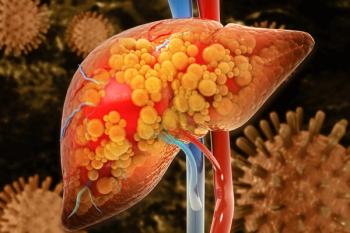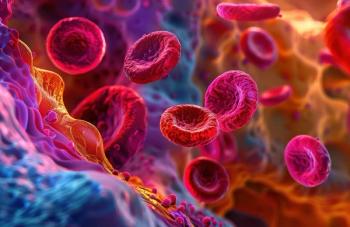
Researchers Outline Promising Biomarkers Throughout Course of MS
Key Takeaways
- Neurofilament light chain is a promising noninvasive biomarker for multiple sclerosis (MS), but lacks disease specificity due to other neurological causes.
- Apolipoprotein levels are negatively correlated with serum neurofilament light chain levels in MS, indicating potential biomarker utility.
As with other disease states, biomarkers that can provide value across diagnosis, prognosis, and treatment response, have been heavily sought out to help guide optimal treatment decisions throughout the course of disease.
Amidst efforts to identify reliable biomarkers in
As with other disease states, biomarkers that can provide value across diagnosis, prognosis, and treatment response, have been heavily sought out to help guide optimal treatment decisions throughout the course of disease.These biomarkers, suggest the researchers of the new paper, could offer alternatives for imaging within MS. The group published their insights in
“Several biomarkers and therapeutic agents have been developed and identified with advances in life science and medicine recently, which have had a significant impact on the diagnosis and treatment of MS,” explained the researchers. “The introduction of serological diagnostics is particularly promising, especially in emerging countries. However, serological markers have limitations, and ongoing research in this area is still relatively new,” wrote the researchers, adding, “In the future, the widespread adoption of serological diagnostics has the potential to alleviate the challenges of patient access to care and reduce the burden on healthcare institutions and individuals.”
Among the most promising biomarkers are neurofilaments, a crucial part of the neuronal cytoskeleton. A growing pile of research have suggested that the proteins are a potential treatment response and prognostic biomarker across MS and other neurological disorders. Made of varying components, including neurofilament light chain (NfL), neurofilaments can leak and spread into cerebral spinal fluid and peripheral blood once an exonal cell is damaged.
Previous research has indicated that patients with MS exhibit higher levels of the protein before onset of disease or before treatment with NfL levels significantly decreasing after treatment initiation. Based on the
However, the researchers also noted challenges with leveraging the biomarker, including that axonal damage resulting in an increase of serum NfL levels is not specific to MS and has other neurological causes, including spinal cord injury.1 Outside of neurological causes, factors such as body mass index and age can impactNfL levels.
Other data have shown that the increased levels of sNfL observed in patients with MS is tied to levels of another serum biomarker, apolipoprotein (ApoA-I). ApoA-I, a group of proteins related to lipoprotein metabolism, has been found in low levels in MS, with the biomarker being negatively correlated with sNfL levels.
Some MS-related studies have shown increased levels of osteopontin (OPN), a glycoprotein expressed in various cell types and tissues, in patients with the disease. Linked to the pathophysiological mechanisms of MS, OPN is also present in other neurodegenerative diseases, creating a lack of specificity that limits OPN use as a single biomarker.
A fourth group of proteins, sirtuins (SIRT), were highlighted by the researchers. The group of nicotinamide adenine dinucleotide-dependent histone deacetylase have shown indications of use for diagnosis and prognostic of relapse.
Multiple studies have shown increased levels of SIRT1 levels in patients with MS, with levels increasing throughout the progression of disease. Certain SIRT have also demonstrated ties to recurrence, with SIRT1 and SIRT3 levels in the peripheral blood of MS patients being significantly associated with disease recurrence.
References:
- Shi M, Liu Y, Gong Q, Xu X. Multiple sclerosis: An overview of epidemiology, risk factors, and serological biomarkers. Acta Neurol Scand. Published online October 23, 2024. doi:10.1155/2024/7372789
- Freedman MS, Gnanapavan S, Booth RA, et al. Guidance for use of neurofilament light chain as a cerebrospinal fluid and blood biomarker in multiple sclerosis management. eBioMedicine. 2024;101:104970. doi:10.1016/j.ebiom.2024.104970
Newsletter
Stay ahead of policy, cost, and value—subscribe to AJMC for expert insights at the intersection of clinical care and health economics.












































